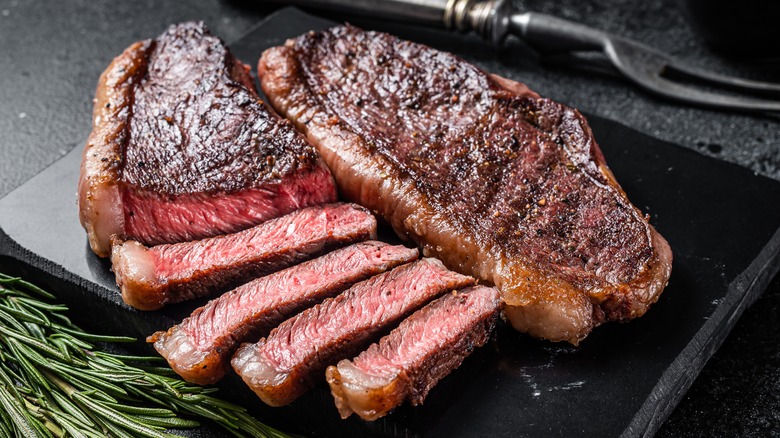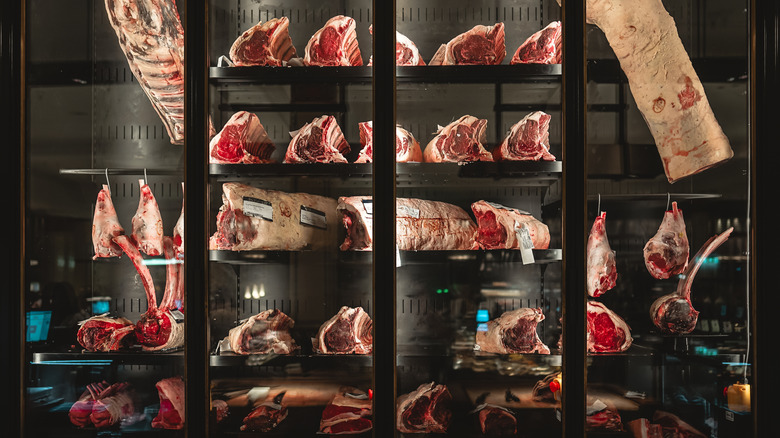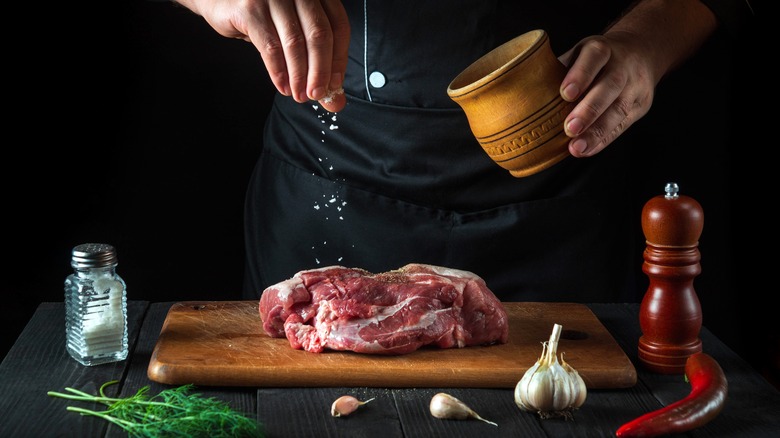The Key To Making Cheap Cuts Of Steak Taste Better
A fancy steak dinner is a great option for date nights and special occasions, but it's not always available within everyone's budget. Especially with beef prices skyrocketing, people are turning to more budget-friendly steak options to get their fix of red meat. The only problem? Cheaper cuts are notoriously trickier to work with, and that is thanks to their abundance of connective tissue and tougher textures.
The good news is that there are a couple of methods that you can use to easily turn these cheaper cuts into a steak that rivals its more expensive counterparts. Popular techniques for these cuts include marinating in acid-based sauces or tenderizing them with salt. But if you have a larger cut of beef, there's something truly special you can do to transform your meal into something worthy of a restaurant. It's time to learn about how dry aging makes your cheap meat taste a lot better.
Dry aging
Dry aging refers to the process of storing large cuts of meat in a cold environment, typically with air circulation, for at least 30 days. During this time, the meat undergoes many chemical changes to become more tender and flavorful. The connective fat and proteins are broken down into smaller, more flavorful compounds. While the enzymes are busy breaking down the muscle protein and fat, the water evaporates and concentrates the beefy flavor.
Some tips to remember: Not all cuts of beef will work for dry aging. Some cuts, especially those with less fat, will dehydrate more quickly, which can leave you with a steak that's tougher than what you started with. Be sure to double-check with your local butcher before embarking on the journey of dry aging. Another thing to remember is that dry aging works best with larger cuts of meat, not individual steaks. Individual steaks will reduce in size so much that it will be difficult to cook them to anything less than well done.
If you find dry-aged steak in the grocery store, you'll notice that the cost of this meat is much higher than its fresher equivalent. In fact, depending on the quality and time spent aging the meat, the price can be as much as two times the cost! What causes the drastic price change? The process of aging meat takes time and space, and these two factors end up increasing the value of the meat.
How to dry age at home
Don't worry about shelling out the big bucks for a dry-aged steak at the grocery store — you can do it at home for cheaper! All you need is a rimmed baking sheet, a cooling rack, cheesecloth, and space in your refrigerator. Salting your meat beforehand will help draw out moisture and tenderize it, shortening the time it takes to age. It would also be better if you have a second refrigerator that you can use to avoid temperature changes when opening or closing the door.
After acquiring the beef, wrap it in cheesecloth and set it on top of a cooling rack fit snuggly inside a rimmed baking sheet. The cheesecloth will allow air to contact the meat while preventing moisture loss, while the cooling rack provides air circulation and the baking sheet will catch any potential moisture that leaks from the steak. The meat can be aged for as little as one week and up to one month. If aged for too long, the meat will acquire funky flavors that most people consider off-putting. However, if you are a fan of those flavors, you are free to continue aging until it reaches your preferred state.


